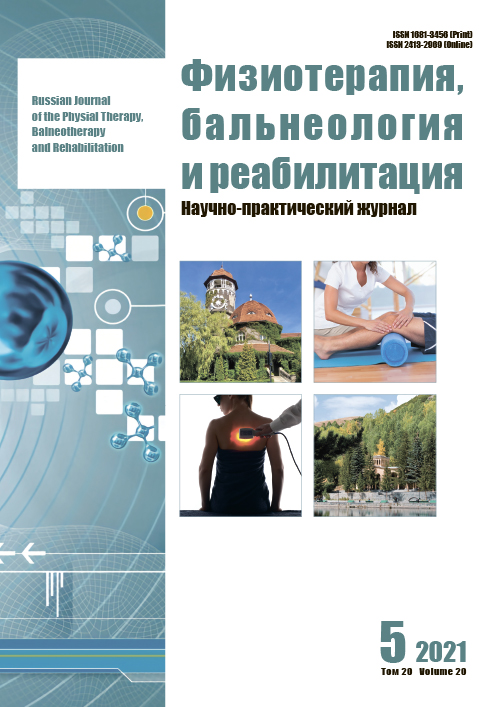The choice of tactics of rehabilitation measures in patients with chronic paraproctitis, depending on the volume of surgical intervention based on quality of life indicators
- 作者: Kovalev S.A.1
-
隶属关系:
- Petrovsky National Research Centre of Surgery
- 期: 卷 20, 编号 5 (2021)
- 页面: 421-428
- 栏目: Original studies
- ##submission.datePublished##: 25.08.2021
- URL: https://rjpbr.com/1681-3456/article/view/108070
- DOI: https://doi.org/10.17816/rjpbr108070
- ID: 108070
如何引用文章
详细
BACKGROUND: The development of medical technologies puts forward requirements for the improvement and optimization of treatment and rehabilitation algorithms for providing surgical care to proctological patients and, in particular, patients with chronic paraproctitis. The criteria for the effectiveness of therapy are the period of wound healing, the frequency of recurrence of the disease and the preservation of the function of the anal sphincter. The development of minimally invasive surgical technologies is a new promising area of outpatient coloproctology.
AIMS: was to evaluate the effectiveness of the use of physiotherapy programs for postoperative rehabilitation according to the SF-36 quality of life assessment scale in groups of patients operated on by various methods of surgical interventions and to develop an Algorithm for surgical treatment and postoperative rehabilitation of patients with chronic paraproctitis.
MATERIAL AND METHODS: The study included observation and control in the pre- and early postoperative period for 270 operated patients with extra- and transsphincter pararectal fistulas with various options for surgical treatment and rehabilitation programs used in the early postoperative period. As a criterion of effectiveness, an assessment of the quality of life b according to the SF-36 questionnaire was used. The surgical-physiotherapeutic Algorithm of surgical treatment and rehabilitation of patients with chronic paraproctitis” is proposed for wide introduction into clinical practice.
RESULTS: As a result of the analysis of the data obtained, it was found that the quality of life depends on the type of operation: the advantage of using minimally invasive surgical interventions and the rehabilitation program used has been proven: the advantage of using an extended 4-component rehabilitation program has been proven.
CONCLUSION: The data obtained made it possible to determine the tactics of rehabilitation measures in patients with chronic paraproctitis depending on the volume of surgical intervention and display it in a visual, schematic form ― Algorithm for surgical treatment and rehabilitation of patients with chronic paraproctitis.
全文:
作者简介
Sergey Kovalev
Petrovsky National Research Centre of Surgery
编辑信件的主要联系方式.
Email: koseal@mail.ru
ORCID iD: 0000-0001-7697-3384
SPIN 代码: 6268-9694
MD, Сand. Sci. (Med.), Associate Professor
俄罗斯联邦, Moscow参考
- Kostarev IV. Preliminary results of treatment of patients with trans- and extrasphincter fistulas of the rectum by laser thermal obliteration of the fistula course. Surgeon. 2020;(3-4):34–42. (In Russ). doi: 10.33920/med-15-2002-04
- Shelygin YA, Biryukov OM, Grateful LA, et al. Clinical recommendations for the diagnosis and treatment of adult patients with chronic paraproctitis (anal fistula, rectal fistula). Moscow: Medicine; 2013. 20 р. (In Russ).
- Arroyo A, Pérez-Legaz J, Moya P. Fistulotomy and sphincter reconstruction in the treatment of complex fistula-in-ano: long-term clinical and manometric results. Ann Surg. 2012;255(5):935–939. (In Russ). doi: 10.1097/SLA.0b013e31824e9112
- Khitaryan AG, Alibekov AZ, Kovalev SA, et al. Multistage minimally invasive treatment for perianal abscess. Coloproctology. 2020;19(2):83–90. (In Russ). doi: 10.33878/2073-7556-2020-19-2-83-90
- Khitaryan AG, Alibekov AZ, Kovalev SA, et al. Filac technology for extrasphincteric fistulas. Coloproctology. 2019;18(2):75–81. (In Russ). doi: 10.33878/2073-7556-2019-18-2-75-81
- Wilhelm A, Fiebig A, Krawczak M. Five years of experience with the FiLaC™ laser for fistula-in-ano management: longterm follow-up from a single institution. Tech Coloproctol. 2017;21(4):269–276. (In Russ). doi: 10.1007/s10151-017-1599-7
- Giamundo P, Esercizio L, Geraci M, et al. Fistula-tract Laser Closure (FiLaC™): long-term results and new operative strategies. Tech Coloproctol. 2015;19(8):449–453. (In Russ). doi: 10.1007/s10151-015-1282-9
- Aleksandrov VV, Dem’yanenko SA, Mizin VI. Fundamentals of restorative medicine and physiotherapy: textbook. Moscow: GEOTAR-Media; 2018. 208 p. (In Russ).
- Vladimirov AA, Ezhov VV, Ponomarenko GN. Physiotherapy: textbook. Moscow: Format; 2013. 384 р. (In Russ).
- Epifanov AV, Achkasov EE, Epifanov VA. Meditsinskaya reabilitatsiya. Moscow: GOETAR-Media; 2015. 672 р. (In Russ).
- Ponomarenko GN. Medical rehabilitation: textbook. Moscow: GOETAR-Media; 2014. 360 р. (In Russ).
- Kovalev SA, Mikhailova AA, Kotenko KV, et al. Database on the use of modern laser and non-drug technologies in the treatment of rectal diseases. Certificate of state registration of the database No. 20211622552. (In Russ).
- Kovalev SA, Bogoslavsky VE, Korchazhkina NB, Kotenko KV. Decision support system “Owl” ― “DSS “Owl”. Certificate of state registration of computer programs No. 3031665750. (In Russ).
- Kovalev SA, Mikhailova AA, Kotenko KV, et al. Database of scientific research on the use of physical factors in surgery. Certificate of state registration of the database No. 20211621978. (In Russ).
补充文件










